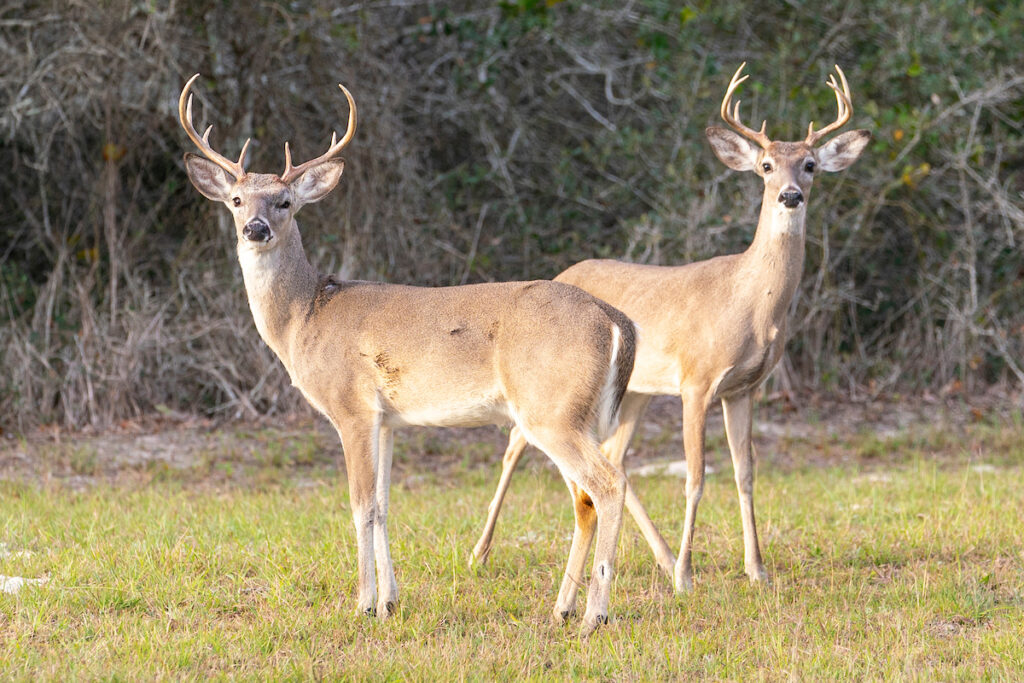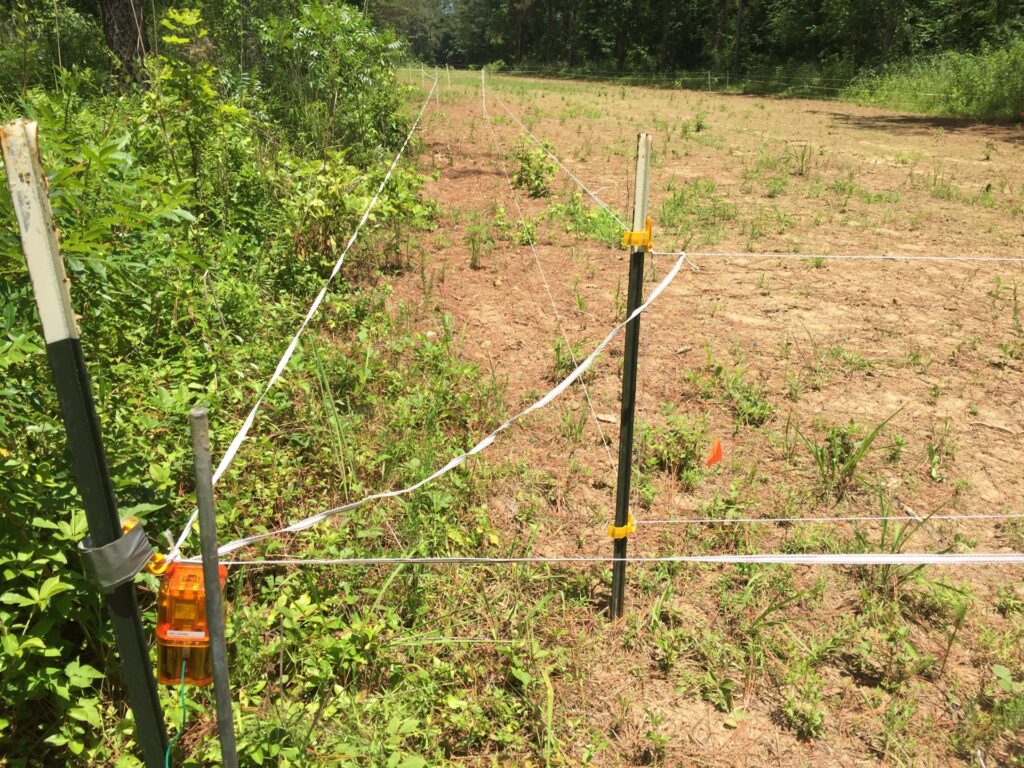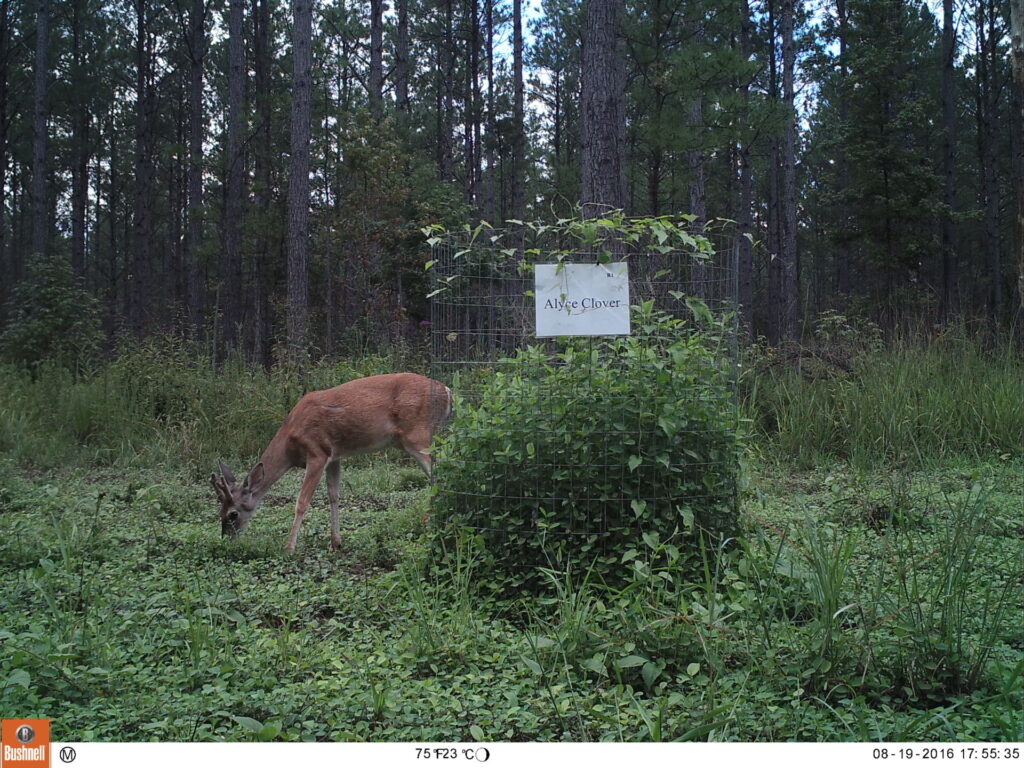Planting the seeds of a successful hunt
AgriLife Extension wildlife specialists encourage preparation for cool-season food plots
As cicadas herald the dog days of summer and triple-digit temperatures blanket the state, cool, quiet mornings in a deer blind overlooking a food plot are a distant dream.

However, if you want to ensure mornings like this in the future, the time to begin preparing a food plot is now, said Jacob Dykes, Ph.D., Texas A&M AgriLife Extension Service wildlife specialist, Corpus Christi.
Food plot benefits to wildlife
Dykes, assistant professor in the Texas A&M College of Agriculture and Life Sciences Department of Rangeland, Wildlife and Fisheries Management, said warm- and cool-season food plots provide benefits beyond attracting white-tailed deer during hunting season. They also support other mammal and bird species during times when forage isn’t abundant and create opportunities for wildlife viewing.
While game feeders dispensing corn or pelleted feed are a popular option in Texas, Dykes said they don’t offer the same benefits as food plots.
“Most feeds are imperfect in that they take a cookie-cutter approach to nutrition and are formulated for the average animal,” Dykes said. “But wildlife are rarely average and have different nutritional needs based upon their stage of life.
“A food plot with different forages provides deer with the opportunity to choose what they need as they balance their nutrient requirements.”
Eating vegetation may also have other benefits such as antimicrobial and antiparasitic properties, Dykes said.
Further, because food plots disperse deer over an area as opposed to concentrating them in a single spot, there is a reduced risk of disease transmission between animals.
Ensuring successful food plots from the ground up
While planting cool-season food plots in Texas typically takes place from September through October, preparation should begin sooner.
“My first recommendation is to always have your soil tested,” Dykes said. “It doesn’t matter how much you plan or how much fertilizer you use — if the soil pH isn’t where it needs to be, nutrients are not going to be available to the plants.”
Soil pH measures the level of soil acidity or alkalinity and ideally should measure in the range of 6-7, Dykes said.
The AgriLife Extension Soil, Water and Forage Testing Laboratory offers Texans a full suite of soil tests. In the case of food plots, the laboratory’s routine soil analysis provides landowners with the information and subsequent recommendations needed to achieve ideal soil conditions.
Additionally, Dykes said landowners should take environmental conditions into consideration when establishing food plots.
“For example, if you know an area of your property is prone to flooding, that’s not the best spot to plant your food plot,” Dykes said.
It also helps to think like a deer when appraising potential plot locations.
“Deer want cover they can use as an escape,” Dykes said. “If you already know that deer are using a particular part of your property, my recommendation would be to simply place your food plot in that area.”
Plot size and composition
Dykes said the most common question he receives regarding food plots relates to the size needed to be effective.
“I’ve planted plots that were one-tenth of an acre, and I’ve planted plots that were 25 acres,” he said. “It just depends on the density of deer on your property and the resources you have available.”
Dykes said if the deer population is high, they can completely devour a plot in a matter of days — especially if you plant a desired crop like soybeans.
While pre-mixed options are available from retailers, Dykes prefers ordering seeds separately and preparing the mix himself.
“Typically, all mixes contain ryegrass, which I am not a big fan of,” Dykes said. “It’s always going to be beautiful and green, and that’s why it’s included.”
Dykes said ryegrass, not to be confused with cereal rye, contains less crude protein and is less palatable and digestible than other cool season options.
Because of its hardy nature, ryegrass can also out-compete other species in the seed mix and become an issue if it establishes on your property.
Aside from ryegrass, Dykes said plenty of options remain for cool-season crops including brassicas, clovers, winter peas and more.
“I really like the standard mix of a winter wheat, oats, crimson clover and arrow leaf clover,” Dykes said.
Landowners can access information on seeding rates and planting depth for Dykes’ recommended cool-season mix in a guide published by AgriLife Extension.
Thanks to the successional growth stages of this species mix, Dykes said the life of the food plot can be greatly extended and serve hunters through the spring turkey season.
That is, of course, if the plot receives sufficient moisture.
“Lack of rainfall is probably one of the biggest limiting factors for successful food plots in Texas,” Dykes said. “I highly recommend food plots, but I always include the disclaimer that if it doesn’t rain or receive supplemental water, the plants won’t grow.”
Breaking ground
After addressing any soil issues, Dykes advises a combination of herbicide and disking to remove existing vegetation and establish a good seed bed.
Fertilizer can also be applied at the time of seed dispersal.
This process typically takes place in the late summer to early fall when rain becomes more dependable. The timeframe also provides around two months for the food plots to germinate and attract white-tailed deer before the November general hunting season begins.
“I start watching the weather in mid-September,” Dykes said. “If I see that the forecast includes rain the following week, I’ll plant the seeds that weekend.”
Challenges and management
Deer aren’t the only wildlife attracted to newly established food plots. The rooting and foraging habits of feral hogs can destroy them.

“If you have a feral hog problem, you need to address that before you plant what essentially amounts to a buffet,” Dykes said.
In order to reduce the impact of white-tailed deer on a newly established food plot, Dykes said the most common method is a two-tiered polywire electric fence. The inner tier of the fence perimeter typically consists of three to four strands of polywire with a strand of polytape forming the outer tier.
Dykes also recommends placing an exclusion cage within the plot.
The cage, which can be constructed using something as simple as chicken wire, prevents feeding in a single area. This untouched boundary sheds light on plant growth, as well as how heavily deer are browsing the plot.
“I’ve had cases where landowners think their food plots were doing poorly, but they were actually performing very well,” Dykes said. “The deer were just coming through and mowing everything down.”

In addition to annual food plots, Dykes said separate perennial plots comprised of durana or ladino clover are also beneficial.
“I love perennial plots because if you miss the opportunity to plant your annual food plot, the perennial plot will hopefully provide some forage to hunt over,” Dykes said.
For landowners hoping to make an even longer-lasting impact, Dykes encourages the planting of trees beneficial to wildlife, such as oaks and common persimmon.
“It all comes down to creating beneficial habitat for the deer,” Dykes said. “If you create good habitat on your land, they won’t have a reason to leave.”


